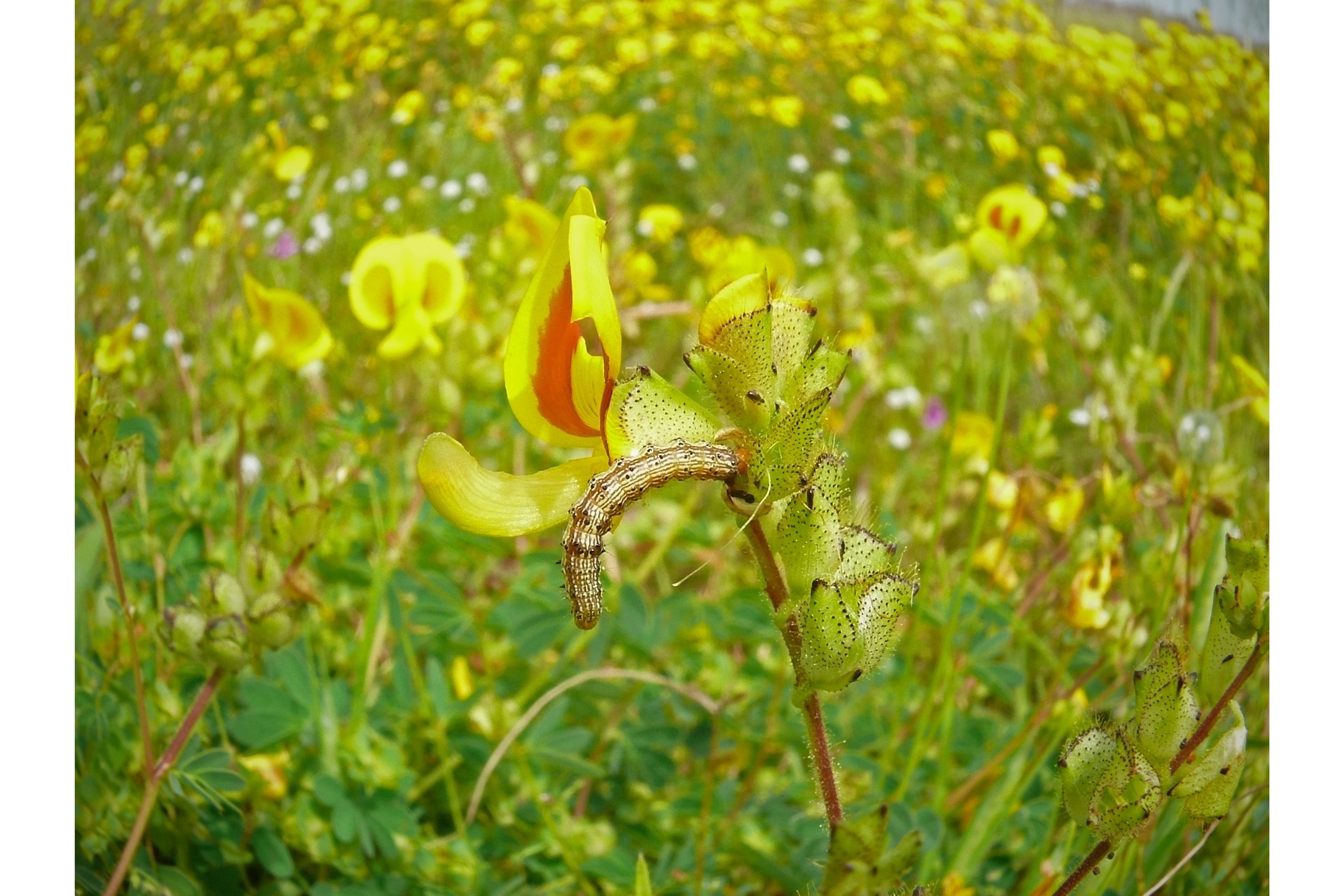European corn borer
(Ostrinia nubilalis)

Description
The European corn borer (Ostrinia nubilalis), also known as the European corn worm or European high-flyer, is a moth of the family Crambidae which includes other grass moths. It is a pest of grain, particularly corn (maize or Zea mays). The insect is native to Europe, originally infesting varieties of millet, including broom corn. The European corn borer was first reported in North America in 1917 in Massachusetts, but was probably introduced from Europe several years earlier. Since its initial discovery in the Americas, the insect has spread into Canada and westward across the United States to the Rocky Mountains. The adult European corn borer is about 25 millimetres (0.98 in) long with a 26–30 millimetres (1.0–1.2 in) wingspan. The female is light yellowish brown with dark, irregular, wavy bands across the wings. The male is slightly smaller and darker. European corn borer caterpillars damage corn by chewing tunnels through many parts of the plant. This decreases agricultural yield. The European corn borer is native to Europe and was introduced to North America in the early 20th century. This moth plagues corn crops in France, Spain, Italy, and Poland. In North America, the European corn borer is found in eastern Canada and every U.S. state east of the Rocky Mountains. The European corn borer progresses through four developmental stages. These are the egg, larva, pupa, and adult. The insect is referred to as a borer in its larval stage and as a moth in its adult stage. The adult moths lay their eggs on corn plants. Larva hatch from the eggs. Larvae have five instars or sub-stages of development. The larval stage is followed by a period of diapause or hibernation in a pupa. During the pupal stage, the borers progress through metamorphosis in a suspended chrysalis. Following this intense period of development, an adult moth emerges from the pupa. The length of the pupal stage is determined by environmental factors such as temperature, number of hours of light, and larval nutrition, in addition to genetics. The bivoltine populations of European corn borers undergo the pupal stage twice, first in May and June and then again in July and August. During the winter, the European corn borer stays in its larval stage. Temperatures exceeding 50 degrees Fahrenheit (10 °C) induce the other developmental stages. The North American corn crop grows during these warmer months and provides a food source for the borers.
Taxonomic tree:







